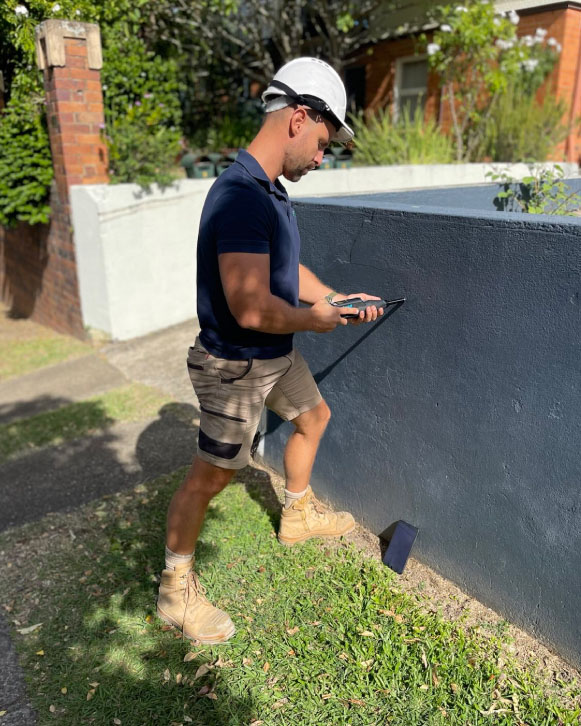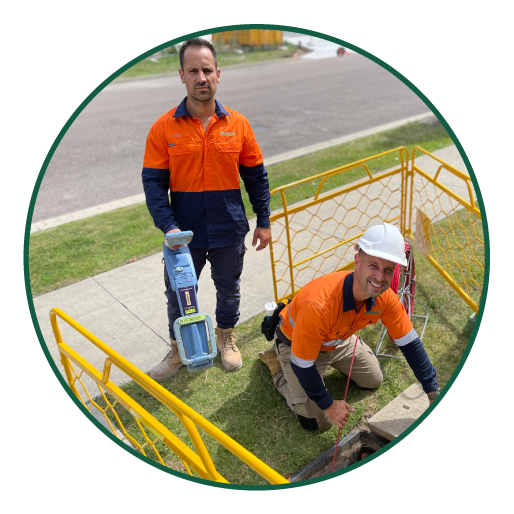SLAB SCANNING
Do you manage a large operations team? Are you in charge of making sure that your clients have access to timely, accurate information about their job sites or civil works projects? If so, then slab scanning services may be just what you need. Slab scanning is essentially the process by which data is gathered via 3D imaging and mapping of a given project sites such as a bridge, roadways, concrete floors, tunnels and other structures – giving us an inside view of the construction work being conducted within these establishments. It’s an invaluable tool for operations managers because it provides a clear insight into activities occurring on any given job site. This article will discuss the many benefits that slab scanning can offer to those who utilise it effectively in their business practices.
Benefits of Slab Scanning
- Improved accuracy and precision in measurements compared to traditional methods.
- Reduction in labour costs as fewer workers are needed to complete the scanning process.
- Increased efficiency as scanning can be done faster than manual measurements.
- Minimisation of errors and inconsistencies in measurement data, leading to better overall quality control.
- Enhanced safety as workers no longer have to climb onto slabs or scaffolding to take measurements.
- Improved communication between stakeholders as the scanned data can be easily shared and accessed by different teams.
- Ability to detect potential issues or defects in slabs early on, allowing for timely repairs or adjustments to be made.
- Ability to create detailed and accurate models of slabs, which can be used for analysis, planning, and design purposes.
- Reduction in waste and material usage as scanning can help optimise the cutting and fitting of slabs.
- Overall cost savings as slab scanning helps avoid costly mistakes or rework due to inaccurate measurements.
Projects Where Slab Scanning Is Recommended
Slab scanning, also known as concrete scanning, is a non-destructive method of detecting utilities, embedded objects, and deteriorated concrete within a concrete slab. This method uses ground-penetrating radar (GPR) technology to locate objects beneath the surface of a concrete slab. Slab scanning is highly useful in a variety of projects, notably in construction and infrastructure.
One of the benefits of slab scanning in construction is that it can detect reinforcement positioning and size as well as reveal structural anomalies before construction begins. The method is also useful during construction as it ensures that critical utilities and structures are not damaged when anchorages or cores are made on the existing slab. In the infrastructure sector, slab scanning is critical in ensuring the structural integrity of bridges, tunnels, and pavements. It helps in locating deteriorated concrete early enough to prevent further damage. Slab scanning provides reliable and accurate data to project managers, engineers, and contractors, thereby reducing the downtime and cost associated with any construction or infrastructure project.
Overall, when applied correctly, slab scanning technologies have the potential to make construction and infrastructure projects safer, faster, and more accurate than ever before.
Moreover, slab scanning is becoming increasingly popular in the construction industry due to advancements in technology and the benefits it offers. For instance, some scanners use lasers or structured light to capture data with high levels of detail and accuracy. Additionally, software programs can analyse the scanned data and create 3D models, which can be used for precision cutting, tolerance checks, and more. Slab scanning can help construction companies achieve greater efficiency and productivity, resulting in faster and more cost-effective project completion.

Potential Risks Of Not Slab Scanning
When constructing a building, it is important to ensure that the building’s foundation is secure and stable. One crucial step in this process is slab scanning, which can detect any potential hazards in the concrete slab beneath the foundation. However, some construction companies may choose to skip this step to save time and money, putting the safety of the building and its occupants at risk. Not slab scanning can lead to a variety of issues, such as uneven settling of the foundation, which can cause cracks in the walls and floor. This, in turn, can weaken the structural integrity of the building and increase the risk of collapse or other safety hazards. Additionally, not slab scanning can lead to the possibility of encountering hidden objects such as conduits, cables or even pipes, which can lead to additional costs, time delays, and potential damage to the structure during the excavation process. When it comes to construction, cutting corners at the expense of safety is never a wise choice. Investing in thorough slab scanning can save time and money in the long run, and most importantly, prevent any unnecessary harm or accidents from occurring.
South East Scanning Uses The Very Latest Slab Scanning Technology
South East Scanning is a leading provider of high-quality scanning solutions that utilises some of the most innovative and top-of-the-line slab scanning equipment available in the market. Our advanced technologies and state-of-the-art equipment enable us to quickly and accurately identify the presence of any underlying objects or materials beneath concrete surfaces, such as rebar, conduits or pipes, that may have a significant impact on structural integrity.
With a team of highly trained experts and cutting-edge equipment, South East Scanning offers unmatched services that ensure clients receive the most accurate results promptly. Our advanced equipment also allows them to provide detailed, 3D imaging of the subsurface, providing clients with the ability to make more informed decisions when it comes to renovation, repair or construction projects.
South East Scanning’s commitment to quality and innovation is second to none, and they continuously invest in the latest technology to ensure that they remain at the forefront of their industry. They pride themselves on their ability to provide a top-notch service, that saves clients time and money, while also improving the safety and durability of their structures.
Conclusion
In conclusion, South East Scanning’s use of innovative and advanced slab scanning equipment has set us apart when it comes to providing accurate and reliable scanning solutions. Our commitment to quality and excellence is evident in our work, making them the go-to option for clients who require the highest level of service and expertise. Contact us for more information.
Our Simple and Easy 6 Step Process!
1. Online Quote
Complete our online quote form and one of our team members will be in contact shortly.
2. Site Visit
We come on-site and view the job, providing you with an accurate quote.
3. GPR Scan
We complete our GPR Scan of the job, covering all areas required.
4. Instant Engineer's Report
We complete our GPR Scan of the job, covering all areas required.
5. Option To Cut Or Core
We provide the option to cut or core the area, which is the process of cutting or drilling.
6. Follow Up Advice
We provide follow up advice on what the best course of action is, prevention and potential problems in the future.
See What Our Happy Customers Think!

Message From The Owners
South-East Scanning was established to meet the needs of a variety of industries that required ground-penetrating radar, concrete scanning services and professional utility detection services at a highly professional level.
We perform our work with the utmost care and attention to detail, combined with quick reporting and reliable service. Our service was created to assist a variety of industries including builders, plumbers, concreters, carpenters, and structural engineers. Our primary focus is honest and reliable 24/7 service.
We look forward to assisting you. Please call 0473 239 781 or use the form below for a fast response.
Frequently Asked Questions
Slab scanning is a process of digitally capturing and analyzing information from slabs or large, flat objects, typically used in industries such as construction, manufacturing, and archaeology. It involves the use of specialized scanning equipment to capture high-resolution images or three-dimensional data for various purposes.
Slab scanning offers several benefits, including:
- Accurate measurements: Scanning allows for precise measurements of slab dimensions, angles, and contours.
- Quality control: It helps identify defects, cracks, or irregularities in the slab surface, enabling proactive quality control.
- Efficient documentation: Digital scans provide comprehensive documentation for future reference, comparisons, and analysis.
- Design and planning: Scanning aids in the creation of 3D models, facilitating design, remodeling, and planning processes.
- Preservation: In fields like archaeology, scanning preserves valuable artifacts digitally, reducing the need for physical handling.
Slab scanning typically involves using specialized equipment such as laser scanners or high-resolution cameras. Laser scanners emit a laser beam that measures the distance between the scanner and the slab surface, creating a point cloud representing the object’s geometry. Cameras capture images from various angles, which are later stitched together to create a detailed digital representation of the slab.
Slab scanning can be applied to a wide range of materials and objects, including but not limited to:
- Concrete slabs used in construction
- Stone slabs, such as marble or granite
- Metal slabs or plates
- Wooden slabs or panels
- Archaeological artifacts, such as ancient tablets or tablets
Yes, slab scanning is an effective tool for quality control. It can detect cracks, surface irregularities, warping, or any other defects that may affect the slab’s structural integrity or aesthetics. By identifying these issues early on, corrective measures can be taken to ensure the quality of the slabs.
There are several software options available for processing slab scan data. Some popular ones include AutoCAD, Revit, Rhinoceros 3D, Geomagic, and MeshLab. These software tools enable the manipulation, measurement, and analysis of the scanned data, allowing for further refinement or integration with other design or engineering workflows.
The time required for slab scanning depends on the size and complexity of the slab, the chosen scanning method, and the desired level of detail. Small and simple slabs may be scanned relatively quickly, while larger or intricate objects may require more time. Additionally, data processing and analysis can take additional time, especially for large and complex projects.
The cost of slab scanning can vary depending on several factors, including the size and complexity of the slab, the chosen scanning method, the required level of detail, and the service provider. It is best to contact a professional scanning company and provide specific details of your project to obtain an accurate cost estimate.